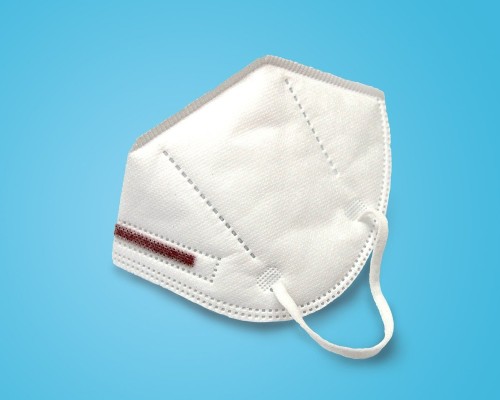The new research, published in Physics of Fluids, details how the Bristol-led research conducted confocal microscopy to take three dimensional images of woven fabric, the kind of material typically used to make cloth masks. Their collaborators at Surrey then used the image to perform Lattice Boltzmann simulations of the air flow through fabric, a common technique used by physicists to analyse fluid dynamics.
The findings from the simulations enabled the team to calculate the filtration efficiency for particles a micrometre (one thousandth of a millimetre) and larger in diameter. For particles with a diameter of 1.5 micrometres – the typical size of Covid-bearing particles – the team estimated woven fabric is only 2.5 to 10 per cent efficient, because most of the air flow is channelled through relatively large gaps between the fabric’s yarns. Multiple layers of fabric improve efficiency in a roughly linear fashion, meaning triple-layer cloth masks are up to 30 per cent efficient, but this is still poor in comparison with the material used for FFP2 masks, which is typically more than 90 per cent efficient.
Dr Richard Sear, from the Department of Physics at Surrey and lead author of the article, said: “It remains important that people are able to make informed choices about what types of face covering to wear. Our research shows that simply switching from using a cloth mask to an approved FFP2 respirator mask significantly improves protection and reduces transmission. The woven fabrics used for cloth masks help disrupt the air flow when people talk, sneeze and breath, reducing the distance travelled by the germs emitted, but they are less effective at filtering when compared to FFP2 masks.”
Jake Wilkins, a Physics undergraduate when he helped to author the research, said: “I feel lucky to see the results of my work published and to know I’m helping contribute to better knowledge. FFP2 masks are just so much more effective than cloth masks in filtering dangerous particles like Covid-carrying particles. If we wear FFP2 masks to medical appointments, it could help protect NHS staff, the majority of whom are advised to use Type II surgical masks. Those are good, but not as good as FFP2 masks. However, I’d like to see progress towards recyclable masks as the environmental cost of air filtration is high.”
Professor Paddy Royall, one of the study’s authors based at both the University of Bristol and ESPCI Paris, said: “An important progress in this work is obtaining 3d images of masks. Until now, we have been limited to 2d images from, for example electron microscopy. The 3d images we obtained with optical confocal microscopy give much greater insight into the structure of masks, which after all, are three-dimensional objects.”
Paper
Modeling the filtration efficiency of a woven fabric: The role of multiple lengthscales by R Sear et al in Physics of Fluids.
